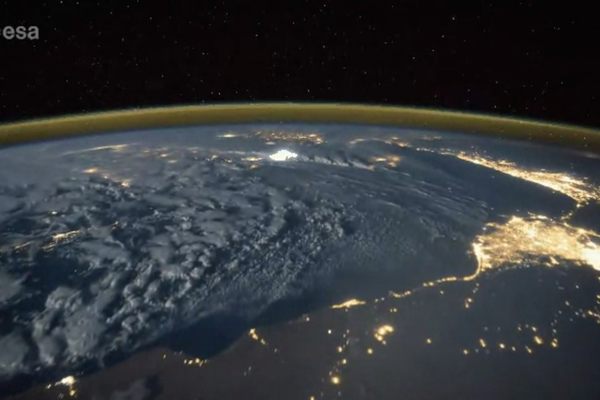Fleeting Wonders: SpaceX Successfully Recycles A Rocket Booster

Launch, re-entry, and landing traces from last night’s Falcon 9 victory. (Photo: SpaceX/Flickr)
The Falcon 9 rocket, the star of Elon Musk’s SpaceX endeavors, has taken its share of bruises, most notably a dramatic launch failure in June that ended in disintegration. But on the evening of December 21, the world watched as it did something no machine of its kind has ever done before—it came back from space and landed on its feet.
The Falcon 9 lifted off at 8:29 p.m. from Florida’s Cape Canaveral Air Force Station. It separated, sending 11 commercial satellites hurtling into space on the smaller, second-stage part of the rocket. Then the enormous booster part touched back down, 10 minutes later and six miles away, at SpaceX’s new crash pad, Landing Zone 1.

Falcon 9 awaits takeoff. (Photo: SpaceX/Flickr)
This is not the first time a rocket has stuck the landing. Last month, Jeff Bezos’s rocketeering outfit Blue Origin vertically landed a much smaller rocket, and SpaceX itself has pulled off a soft landing at sea. But the Falcon 9 is the largest and fastest rocket booster to manage a hard landing—large and fast enough to actually deliver goods or people into space. This brings the ultimate goal of low-cost space flight much closer, and makes for a one-small-step-for-rocket, one-giant-leap-for-rocketkind type of accomplishment.
The New York Times called the evening ”a threefold success” for SpaceX—besides this unprecedented rocket-recycling, the company also introduced an upgraded design that incorporates colder fuel and liquid oxygen.

A human awaits the new rocket overlords at Landing Zone 1. (Photo: SpaceX/Flickr)
You can watch (or re-watch) the entire launch on SpaceX’s YouTube channel.
Every day, we track down a fleeting wonder—something amazing that’s only happening right now. Have a tip for us? Tell us about it! Send your temporary miracles to [email protected].









Follow us on Twitter to get the latest on the world's hidden wonders.
Like us on Facebook to get the latest on the world's hidden wonders.
Follow us on Twitter Like us on Facebook